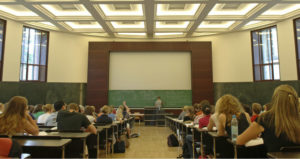
“Do You Have Time to Talk?” When Students Look to Professors for Help
Frequently college students seek emotional support and personal advice from faculty members with whom they have had supportive interactions. Faculty need to balance the idea of helping students with their more formal role as instructors, working to figure out appropriate boundaries.











